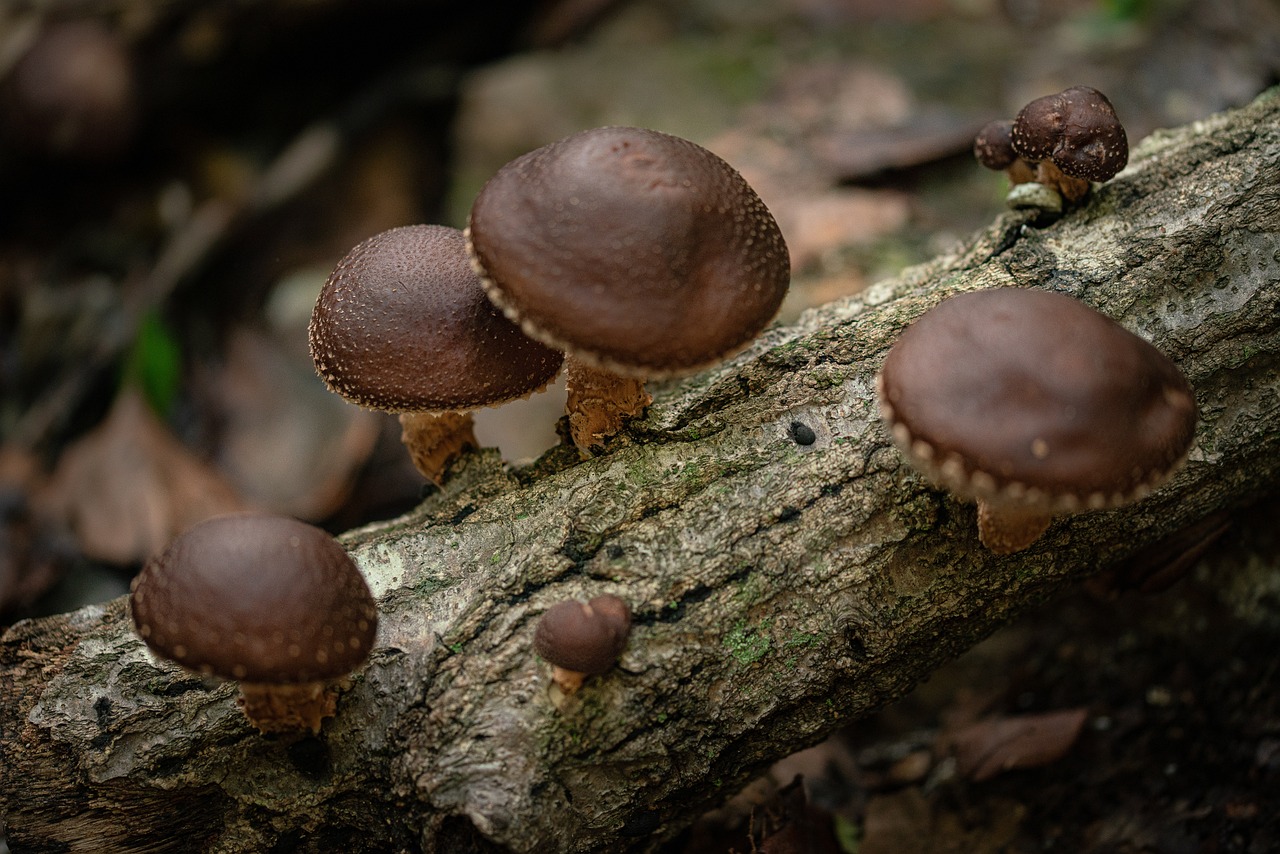THE POWER OF MEDICINAL MUSHROOMS
A lot of people probably have never heard of the use of mushrooms in medicine. Let alone to help improve your horse`s health. But guess what…. It can be used for horses (animals) and it is amazing stuff!
The application of medicinal mushrooms in all kinds of disorders is called mycotherapy. Veterinary Mycotherapy is an age-old folk science with an impressive number of medical applications. Mushrooms have been successfully used in the Eastern countries since time immemorial, both as a food and as a medicine. In Western countries, too, interest in the healing effects of medicinal mushrooms is growing enormously.
In veterinary medicine it has been proven to use two or even more mushrooms at the same time. Just like with using more herbs at the same time. They work synergetic and have a more powerful effect then using just 1 on its own. For example:
The Coprinus (shaggy mane) and Agaricus Blazei (almond mushroom) both work on sugar intolerance ( IR/EMS). The Shaggy mane works on the islets of Langerhans which are cells scattered throughout the pancreas. And the Almond mushroom works on the insuline receptors. But how do you know which one your horse needs? So you can combine the 2 together and for example give this to your sugar sensitive horse all Summer long when they are out on grass.
In general the mushrooms are safe to use but when using the wrong mushroom you will not see any improvement in your animals health. Mushrooms should also be giving longer than herbs, they are a slow medicine and need time to kick in. In some cases you will see results within a couple of days.
The only side effect that it can have is diarrhea. If this happens then you adjust the amount that your feeding and the diarrhea should disappear within a couple of days.
Medicinal mushrooms can help treat:
• A weak immune system and with allergies
• Gastrointestinal problems such as leaky gut syndrome, faecal water and more
• Metabolic diseases
• Liver and kidney problems
• Stress, heart and vascular problems
• High colestrol
• Chronic airway problems
• Cushings dieases
• Borellia

At the Horse therapist we can test your horse or dog remotely and measure exactly which mushrooms resonates with your animal, how much of the mushroom mix should be fed and also for how long. We then put together a customized mix for your animal. This way you know exactly what the animal needs rather than guessing.
You can use both herbs and mushrooms at the same time. The mushrooms are kind of like the base for building a house on such as the concrete block. And the herbs are the tools to repair the house/build the house. If the base isn’t right then you can never repair or build the rest of the house!
Are you interested to find out what mushrooms your horse needs? Then book the remote test online now and get a customized mix to help your horse get back to health again!
We highly recommend watching; Fantastic funghi
More info on medicinal mushrooms:
• Bae EA, Kim DH, Han MJ. (1997): “Effect of Lentinus edodes on the growth of intestinal lactic acid bacteria.” Arch Pharmac Res, 20: 443-447.
• Bernardshaw S, Hetland G, Grinde B, Johnson E. (2006): “An extract of the mushroom Agaricus blazei Murill protects against lethal septicemia in a mouse model of fecal peritonitis.” Shock, 25(4): 420-425.
• Chen DG. (1995): “Effects of Jinshuibao capsule on the quality of life of patients with heart failure.” J Admin Trad Chin Med, 5: 40-43.
• Gao YH, Zhou SF, Huang M, Xu A. (2003): “Antibacterial and antiviral value of the genus Ganoderma P. Karst. species (Aphyllophoromycetideae): a review.” International Journal of Medicinal Mushrooms, 5 (3): 235-246.
• Joseph S, Baby S, Varughese G, Thozhuthumparambal PS, Kainoor J. (2009): “Antioxidative and Antiinflammatory Activities of the Chloroform Extract of Ganoderma lucidum Found in South India”, in Scienza Pharmaceutica, 77, pp. 111-21.
• Kuznetsov OIU, Mil’kova EV, Sosnina AE, Sotnikova NIU. (2004): “Anti- microbial action of Lentinus edodes juice on human microflora.” Zhurnal mikrobiologii, epidemiologii, i immunobiologii, (1): 80-82.
• Miyamoto I, Liu J, Shimizu K, Sato M, Kukita A, Kukita T, Kondo R. (2009): “Regulation of osteoclastogenesis by ganoderic acid DM iso lated from Ganoderma lucidum.” Eur J Pharmacol, 602: 1.
• Mizuno M, Nishitani Y, Hashimoto T, Kanazawa K. (2009): “Different suppressive effects of fucoidan and lentinan on IL-8 mRNA expression in in vitro gut inflammation.” Bioscience, biotechnology, and biochemistry, 73(10): 2324- 2325.
• Rajasekaran M., Kalaimagal C. (2012): “Cardioprotective effect of a medicinal mushroom, Ganoderma lucidum against Adriamycin induced toxicity.” International Journal of Pharmacology, 8: 252-258.
• Stavinoha W, Satsangi N, Weintraub S. (1995): “Study of the antiinflammatory efficacy of Ganoderma lucidum.” Kim BK, Kim YS. (Eds.): Recent Advances in Ganoderma lucidum research. The Pharmaceutical Society of Korea, pp. 3-7.
• Stavinoha W, Slana J, Weintraub S, Mobley P. (1991): “The Antiinflammatory activity of Ganoderma lucidum.” Third International Symposium on Ganoderma lucidum, pp. 9-21.
• Sudheesh NP, Ajith TA, Janardhanan KK. (2009): “Ganoderma lucidum (Fr.) P. Karst enhances activities of heart mitochondrial enzymes and respiratory chain complexes in the aged rat.” Biogerontology, 10(5): 627-636.
• Yan XF, Zhang ZM, Yao HY, Guan Y, Zhu JP, Zhang LH, Jia YL, Wang RW. (2013): “Cardiovascular protection and antioxidant activity of the ex- tracts from the mycelia of Cordyceps sinensis act partially via adenosine receptors.” Phytotherapy Research, 27(11): 1597-1604.
• Yi X, Huang XZ, Zhu JS. (2004): “Randomized double-blind placebo- controlled clinical trial and assessment of fermentation product of Cordyceps sinensis (Cs-4) in enhancing aerobic capacity and respiratory function of the healthy elderly volunteers.” Chinese Journal of Integrative Medicine, 10(3): 187-192.
• Gao YH, Huang M, Lin ZB, Zhou SF. (2003): “Hepatoprotective Activity and the mechanisms of Action of Ganoderma lucidum (Curt.: Fr.) P. Karst. (Ling Zhi, Reishi Mushroom) (Aphyllophoromycetideae) (Review).” Interna- tional Journal of Medicinal Mushrooms, 5: 111-31.
